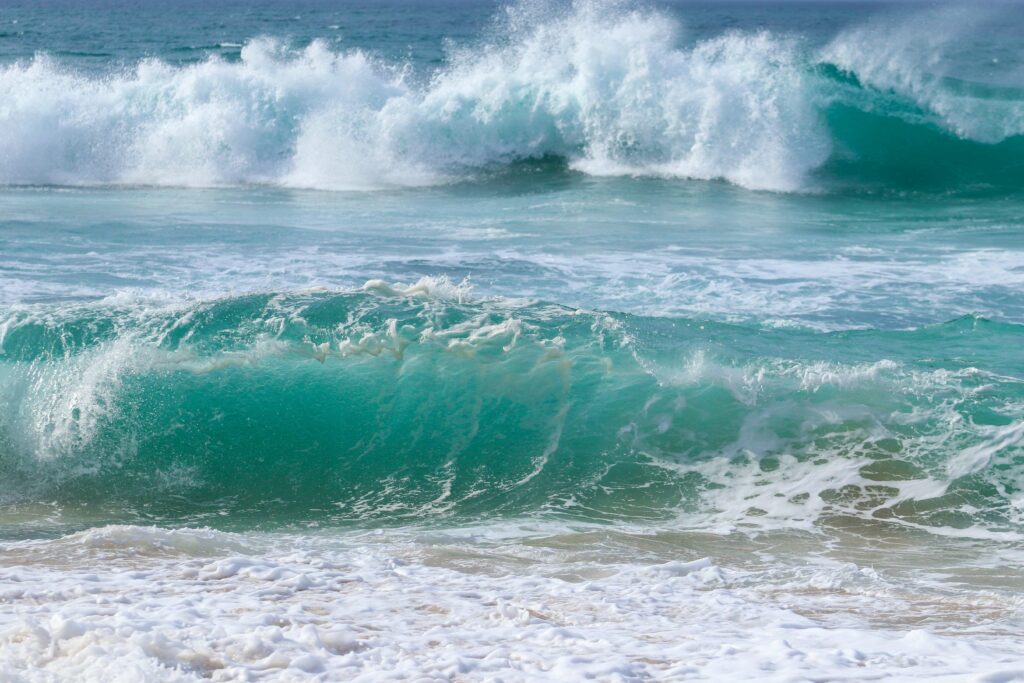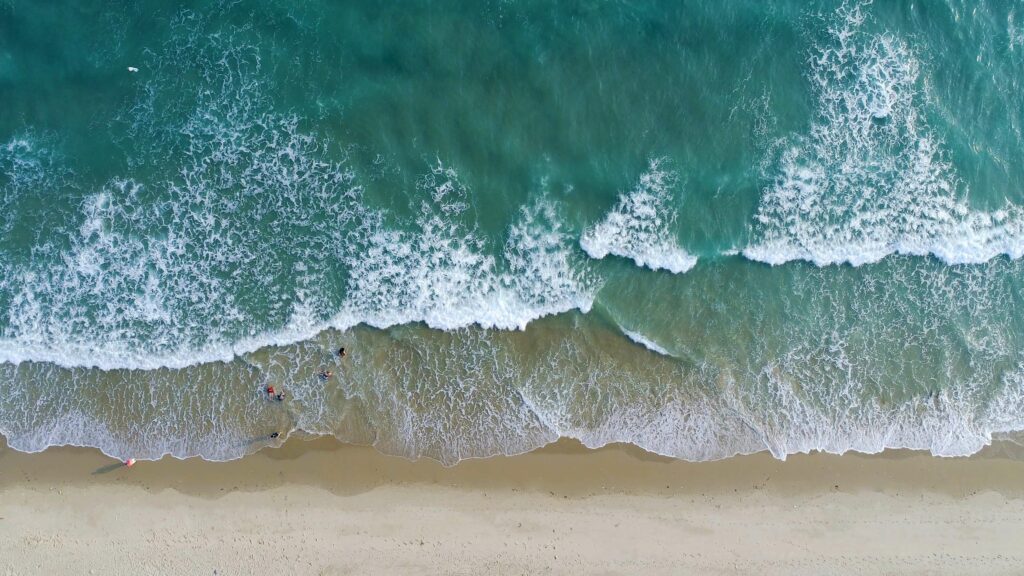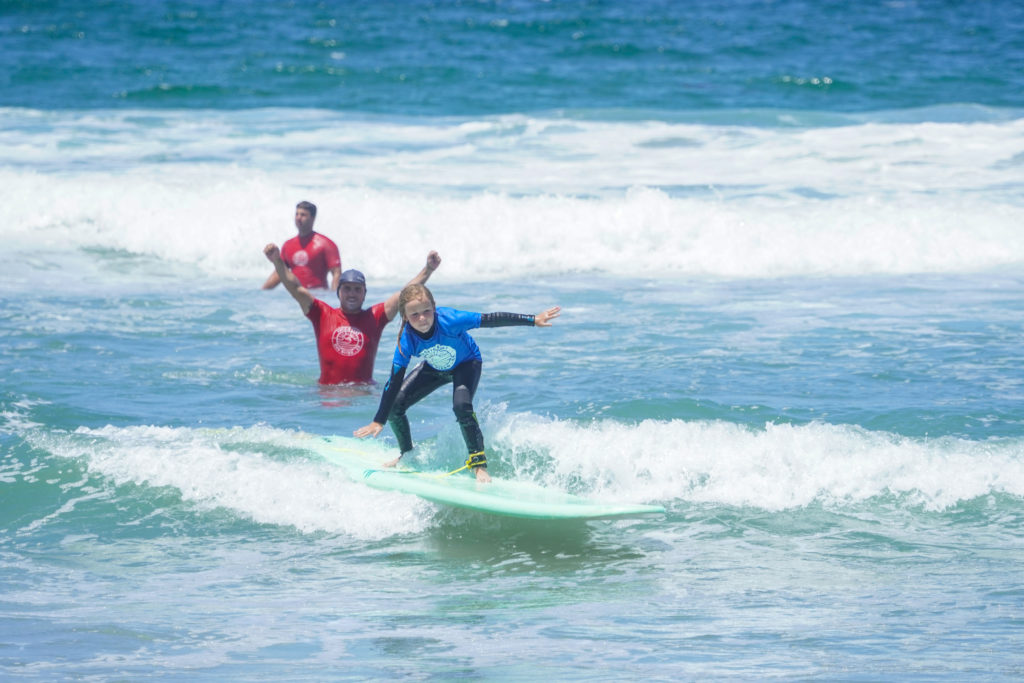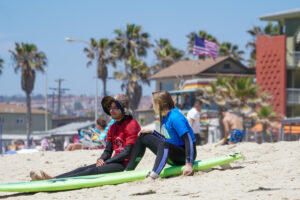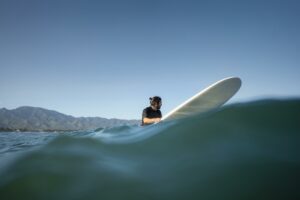What Is The Best Tide For Surfing?
Surfing is an exciting and adrenaline-pumping activity, but it’s important to know the best tide for optimum conditions. It isn’t just about going out on a sunny day and having fun – understanding the ocean’s currents and how they affect your surfing experience is key. Knowing when to go out, in what direction, and how to read the waves can make all the difference between a successful session and a wipeout.
So, if you want to make sure that you’re shredding at your best, read on to discover the secrets of surfing at different tides!
The Basics of Tides
Tides are the rise and fall of ocean water levels caused by the gravitational pull of the moon, sun, and earth. The two most common types of tides are spring tides and neap tides. Spring tides occur during a full or new moon (when the gravitational pull is stronger) and cause higher highs and lower lows than usual. Neap tides occur during a first or third quarter moon, when the gravitational pull is at its weakest, resulting in lesser tidal ranges.
Depending on where you live, your local area may experience different types of tide patterns; some areas only have one high and one low tide per day while others can have multiple peaks throughout the day. Knowing how to read a tide chart can help you plan your surf sessions accordingly as different times will offer better conditions for surfing (just choose your location)!
Low Tide Surfing
Low tide surfing can be a great way to get barreling waves and have some fun in the water. When the tide is low, the ocean is at its shallowest and there’s usually more sand and reef exposed. This means powerful waves can be created, making for some awesome rides!
Low tides can present some extra challenges as there is less room for error if you are riding over a hard bottom.
Make sure you have experience and local knowledge before taking on any challenging spots or big swells. But with a little planning and caution, low tide surfing can offer up some of the most rewarding rides around!
Mid-Tide Surfing
Mid-tide surfing is ideal for those looking to catch waves that are neither too big nor tiny. When the tide is in the middle, the water is deep enough for swells to form but shallow enough for you to avoid any major hazards or obstacles.
With a mid-tide swell, you can expect plenty of head-high sets and if you’re lucky, you could even get some barrels. There’s usually less competition at mid-tide since most people want to hit either low or high tides when they go out surfing.
This means there will be plenty of open waves for you to enjoy and it’s a great way to hone your skills without feeling rushed or overwhelmed by other surfers. So if you want consistent waves with minimal risks, mid-tide surfing is the perfect choice!
High Tide Surfing
High tide surfing is the perfect choice for those looking to take their skills to the next level. As the tide rises, so do the waves, and with that, so does the intensity of your surfing session. High tide waves tend to be larger and more powerful, allowing you to practice more advanced maneuvers like cutbacks, floaters, and barrel rides.
The surf at high tide can also be unpredictable since it’s dependent on the swell direction, so it’s important to be aware of what’s coming your way.
While this may sound intimidating for beginner surfers, experienced riders can really take advantage of these conditions and challenge themselves in ways they wouldn’t have been able to before. So if you’re looking for an adrenaline-filled experience full of big wave action, high tide surfing is just what you need!
Incoming Tide Surfing
Incoming tide surfing is a great choice for those seeking an adventure. This is when surf conditions are at their harshest. As the tide comes in, the waves become bigger and more powerful. This makes it perfect for experienced surfers looking to test their skills with some higher-level maneuvers like cutbacks, floaters, and barrel riding.
An Incoming current also brings with it glassy conditions, providing you with smooth and pristine waters that are ideal for taking your surfing to the next level.
On top of that, the early morning hours can offer some of the best waves while still keeping shark activity at a minimum. So if you’re looking for a challenge and want to take your surfing up several notches, look no further than incoming tides!
Outgoing Tide Surfing
Outgoing tide surfing is a great option for intermediate and beginner surfers alike. With the tide going out, the waves become more manageable and less intimidating. This makes it much easier to learn how to properly navigate the waves without feeling overwhelmed or intimidated.
An Outgoing current also tends to create some small peaks that can be perfect for learning how to paddle and catch your first wave.
For the cherry on top, sunset sessions with an outgoing tide can make for some truly stunning views and unforgettable experiences. So if you’re looking for a mellow and enjoyable surfing session, look no further than outgoing tides!
Other Factors to Consider
When deciding which tide is best for surfing, there are factors to consider besides the tide. Water depth, water movement, and currents should also be taken into account. Ultimately, picking the right tide is only part of the equation – all these other factors should be taken into account before heading out into the waves!
Time of Day
The time of day is an important factor to consider when determining when the best tides for surfing are going to occur, as tides are directly influenced by the position of the moon and the sun in the sky. The gravitational pull of these celestial bodies causes the water to rise and fall, resulting in high and low tides. Different times of day can affect the intensity and size of waves, which can impact the quality of the surfing experience.
For example, during low tide, waves may break closer to shore and be smaller in size, while during high tide, waves can be larger and more powerful.
Thus, understanding the time of day and how it impacts tides is crucial for surfers to plan their surfing sessions effectively and ensure the best possible conditions for their activity.
Water Depth
One of the most important factors to consider when picking the best tide for surfing is water depth. The deeper the water, the bigger and better the waves can be. However, if it’s too deep then it can be difficult to paddle out – especially in higher tides.
To ensure you get the best waves possible, try to aim for a medium depth where you can still feel some resistance but not so much that it becomes a struggle. Of course, this will vary depending on your skill level and experience so don’t be afraid to experiment!
Weather Conditions
Weather conditions play a crucial role in determining the best tide for surfing. The wind, rain, and temperature can affect the quality and behavior of the waves, making them more or less suitable for surfing.
For example, strong onshore winds can create choppy and messy waves, making it difficult for surfers to catch and ride them. In contrast, offshore winds can create clean and organized waves that are easier to ride.
Water Temperature
Water temperature is a crucial factor that surfers must consider when deciding on the best tide for surfing. Water temperature can affect the behavior of waves, which can impact the quality of the surf.
Cold temperatures can slow down the speed of waves, while hot temperatures can create a flatter ocean surface, making it difficult for surfers to find good waves.
Rips
Rips are one of the most important elements to consider when trying to determine the best tide for surfing. Rips are essentially currents created by waves pushing water from the shore outwards, and they can be incredibly powerful and unpredictable.
If you’re surfing on an incoming or outgoing tide, then rips can be your friend as they can help you catch some epic rides. However, if you’re surfing in a spot with a lot of rips, then it might be best to avoid that spot altogether as it could be too dangerous for inexperienced surfers. So always take time to familiarize yourself with any spot before paddling out.
Best Tides For Beginners
For beginners, the best tide for learning to surf is a low to mid tide. During these stages, waves tend to break slower and closer to the shore, providing a more manageable and less intimidating surfing experience.
Additionally, low to mid-tides often offer longer rides, giving beginners ample time to get to their feet and ride the wave. Conversely, a high tide typically creates steeper and faster waves that can be challenging for novice surfers to navigate.
It’s important to note that tide conditions can vary depending on the location and weather conditions, so it’s always advisable to check local tide charts and consult with experienced surfers or instructors before heading out.
Come Surf With Us!
The best tides to surf in can vary depending on the location, but in general, mid to high tides are ideal for beginners as they provide more forgiving waves. However, experienced surfers may prefer lower tides as they produce faster and more challenging waves.
At Pacific Surf School, we offer Surf Lessons in San Diego tailored to all skill levels at various picturesque locations along the California coast, including San Diego, La Jolla, Pacific Beach, Mission Beach, Huntington Beach, Santa Monica, Los Angeles, and Santa Cruz. Our proficient team of instructors can guide you seamlessly through different tides and conditions, providing a safe and exhilarating surfing experience.
If you’re interested in taking your surfing skills to the next level, contact us here at Pacific Surf School today and let us help you catch some waves!
FAQs
The best wave conditions for surfing vary depending on a surfer’s skill level and personal preferences. However, in general, good surfing conditions include waves that are clean and consistent, with a moderate swell height and a good period between waves. Ideally, the wind should be light and offshore, which means blowing from land towards the sea, to create a smooth, clean face on the waves. The water temperature should also be comfortable for the surfer.
There are several conditions when it is not advisable to surf, including when there is a high chance of lightning, heavy rain or fog that can limit visibility, strong onshore winds that create choppy and difficult-to-ride waves, and when there is a high risk of riptides or other dangerous ocean currents. It’s also important to avoid surfing during storms or hurricanes, as the waves and currents can be extremely dangerous.
For beginners, it’s best to start with small waves, typically in the range of 1-3 feet. This allows beginners to get comfortable with the basics of surfing, such as paddling, popping up, and riding a wave. As a beginner’s skills progress, they can gradually start to tackle larger waves. However, it’s important to remember that wave height is not the only factor to consider when surfing, and beginners should also pay attention to factors such as the shape and quality of the wave, the water temperature, and the presence of any hazards or obstacles in the water.


